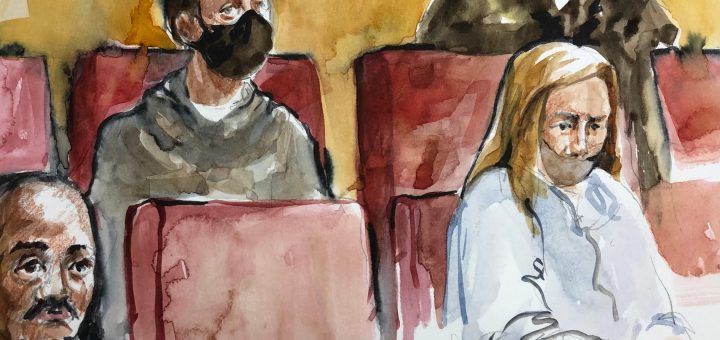Protecting the Accused from Wrongful Convictions R v Riley: the SCC’s Stance on Convictions after Incorrect Use of the Vetrovec Instruction

What happens to the accused when a jury is incorrectly advised, leading to the accused’s conviction? The Supreme Court of Canada (“SCC”) addresses this question in R v Riley, 2020 SCC 31 [Riley] by reaffirming the dissenting judge’s reasons at the Nova Scotia Court of Appeal assessing the Vetrovec instruction and its significance within the criminal law context.
Factual Overview
On October 23, 2010, Randy Riley [“Mr. Riley”] got into a car with his friends Mr. Paul Smith [“Paul”], Mr. Nathan Johnson [“Nathan”], and Mr. Chad Smith [“Chad”] (R v Riley, 2019 NSCA 94, para 32) [“NSCA”]. According to Nathan’s testimony, the group played poker at a friend’s house, then Paul dropped Mr. Riley at his girlfriend’s house, and then dropped Nathan on a specified street of Highfield Park Avenue (NSCA, para 33). Nathan testified that he did not have a cell phone and instead used a payphone to call Chad because Chad owed him money for drugs, and when Chad failed to answer, he called Chad’s place of work and placed an order for a pizza knowing that Chad would deliver it (NSCA, para 34). Nathan testified that he retrieved a gun that he had stashed in the woods nearby, and when Chad showed up, Nathan indicated that there was an accidental discharge that ended up killing Chad. Nathan also indicated that he did not mean to kill Chad, but rather he intended to shoot Chad in the arm to scare him (NSCA, paras 35-38). The Crown, however, noted that there were inconsistencies in Nathan’s testimony (NSCA, para 39).
Procedural History
Mr. Riley and Nathan were jointly charged for the first-degree murder of Chad (NSCA, para 2). The Crown produced witness testimony during the trial hearing implicating Mr. Riley along with Nathan in Chad’s premeditated murder (R v Johnson, 2017 NSCA 64, para 15) [Johnson]. However, Mr. Riley was convicted of second-degree murder by a jury (NSCA, para 2). Mr. Riley was able to apply for severance, as the evidence against Nathan differed drastically from the evidence directly admissible against Mr. Riley. Meanwhile, a jury convicted Nathan of first-degree murder and was unsuccessful in his appeal (Johnson, paras 4-6).
Kaitlin Fuller, Nathan’s former girlfriend, was a Crown witness who testified against Nathan. She provided evidence of the admissions Nathan had made to her with regard to his “active role” in Chad’s murder (NSCA, para 4). This evidence, however, was not admissible in Mr. Riley’s case because the evidence was considered prima facie hearsay (NSCA, para 6). Instead, the Crown called Nathan as a witness to testify against Mr. Riley. However, Nathan’s evidence was that he was solely responsible for Chad’s death thereby exonerating Mr. Riley (NSCA, para 8). As a result of Nathan’s testimony not supporting the Crown’s stance against Mr. Riley, the Crown sought to have Nathan declared as an adverse witness, pursuant to section 9(1) of the Canada Evidence Act, RSC 1985 c. C-5 [“CEA”].
At the end of the evidentiary portion of the voir dire to determine adversity pursuant to section 9(1) of the CEA, the trial judge stated that he will give the jury a Vetrovec instruction regarding Nathan (NSCA, para 10). A Vetrovec instruction is given when a “witness of unsavoury character” cannot be trusted to provide reliable evidence (NSCA, para 10). In such a case, the judge may “caution the jury against relying on the unsavoury witness’ testimony to convict the accused” unless there is evidence that corroborates that testimony (NSCA, para 10). The defence counsel for Mr. Riley had no objection to the trial judge’s Vetrovec instruction, even though the evidence could help Mr. Riley’s case (NSCA, para 11).
On appeal, the majority of the Court of Appeal dismissed the appeal, holding that the trial judge’s use of the Vetrovec instruction was legally wrong as case law indicates the instruction is applied to defence witnesses, whereas Nathan was a Crown witness (NSCA, para 80). The SCC allowed the appeal and issued a unanimous oral judgement on November 3, 2020, quashing Mr. Riley’s second-degree murder conviction and ordering a new trial.
SCC Decision
In its oral judgment, the SCC relied on Scanlan JA’s dissenting reasons at the NSCA. Scanlan JA disagreed with the majority’s decision to dismiss the appeal, stating that the Vetrovec instruction “was developed as a jury instruction in an effort to decrease the chance of wrongful conviction”— impacting how juries weigh the evidence of unsavoury Crown witnesses (NSCA, para 131). He indicated that the significance of providing the Vetrovec instruction to the jury, while discretionary, can be “measured by the number of convictions that have been set aside when a Vetrovec instruction has not been given; in addition to when “convictions that have also been set aside when a Vetrovec instruction has been given and it should not have been” – such as this case (NSCA, para 131).
Accordingly, Scanlan JA determined that while Nathan’s evidence was exculpatory and should not have been subjected to a Vetrovec instruction, the purpose of the Vetrovec instruction is to limit the risk of wrongful conviction and that it would be perverse if it “instead was used in a way that may well have increased the risk of wrongful conviction” (NSCA, para 131).
Scanlan JA concluded that he was not convinced “to any degree of certainty” that the verdict would have been the same had the jury been properly instructed (NCSA, para 170). He further indicated that the verdict of the jury depended on how the jury weighed the evidence after they had been properly instructed and that the “dichotomy of the evidence would not support a finding on appeal that an acquittal nor conviction is warranted at this stage” (NCSA, para 168). Therefore, Scanlan JA’s dissenting Court of Appeal judgement—affirmed by the SCC—quashed Mr. Riley’s convictions and ordered a retrial (NCSA, para 172).
Potential for Wrongful Conviction
By affirming Scanlan JA’s dissenting judgement, the SCC has outlined the vast significance of preventing the potential for wrongful convictions—even at the expense of applying the law incorrectly. The evidence given by Nathan was exculpatory, however, if truthful, would likely have exonerated Mr. Riley. The Vetrovec instruction, warning the jury to not rely on evidence of unsavoury witnesses was likely to have a considerable contribution to Mr. Riley’s convictions. Quashing the convictions and ordering a retrial, thus, reaffirms the law’s presumption of innocence, and the SCC’s repugnance for the potential of a wrongful conviction.







Join the conversation